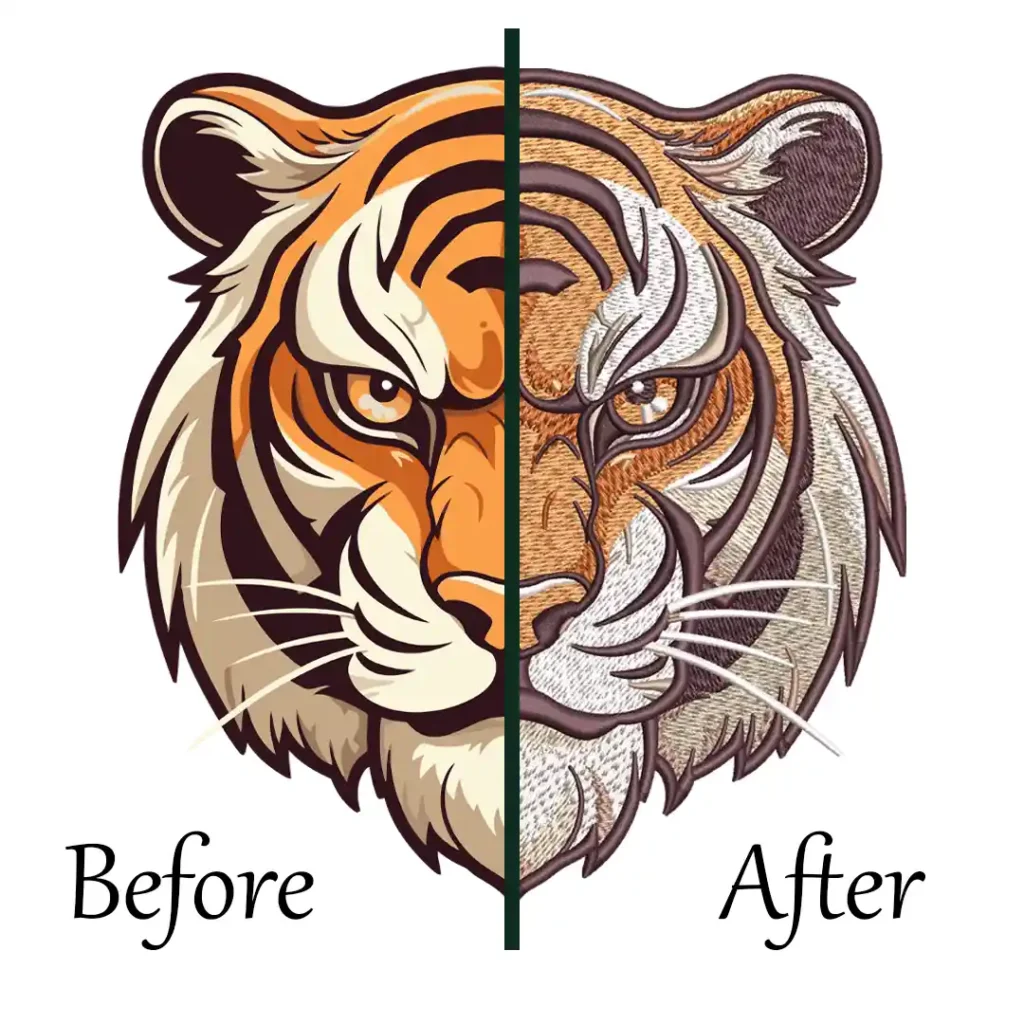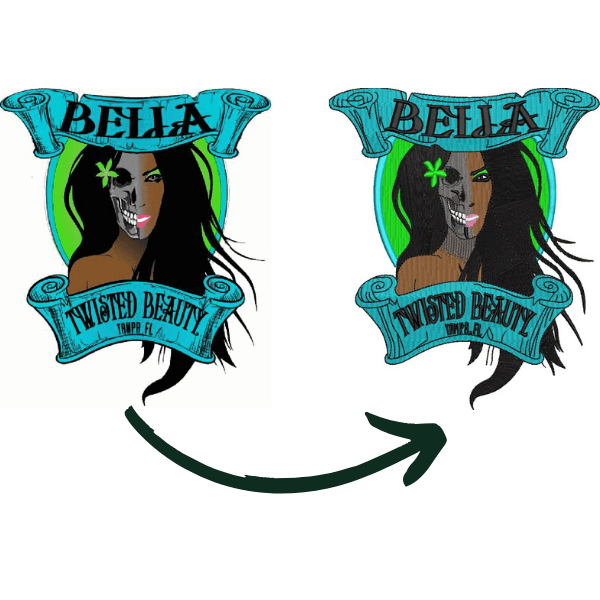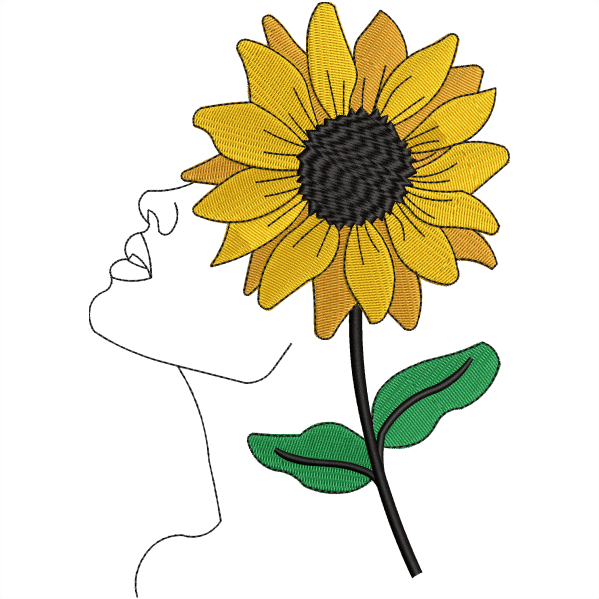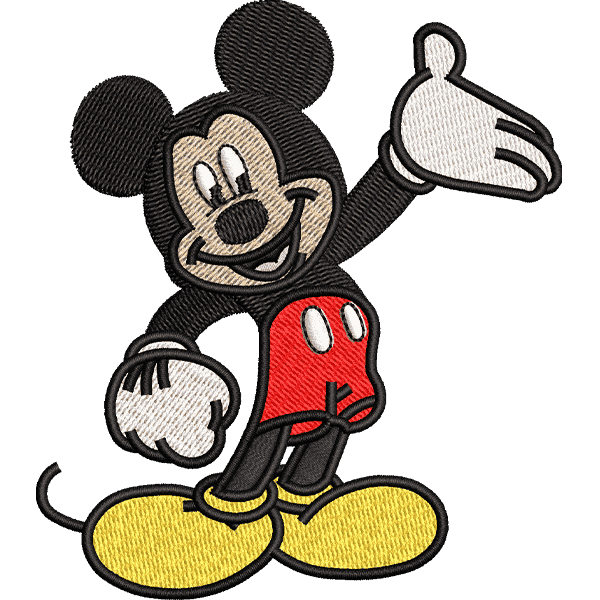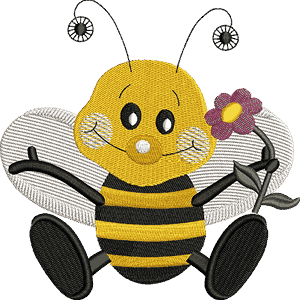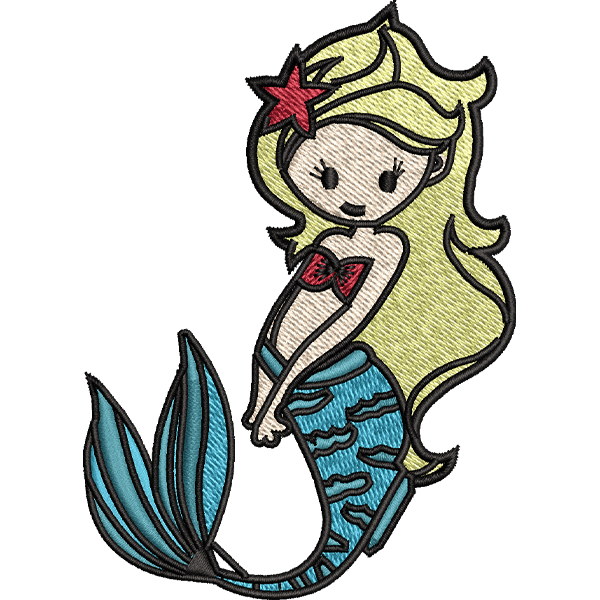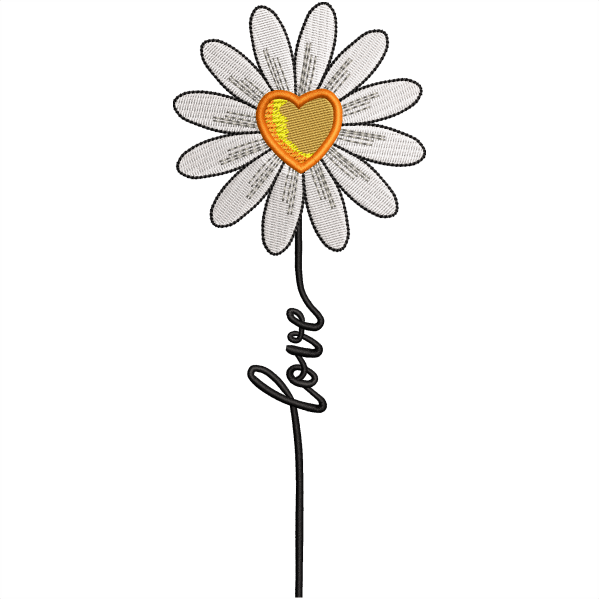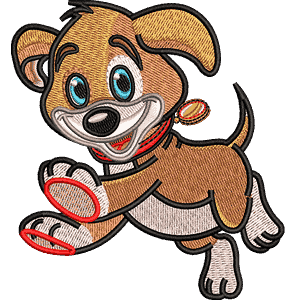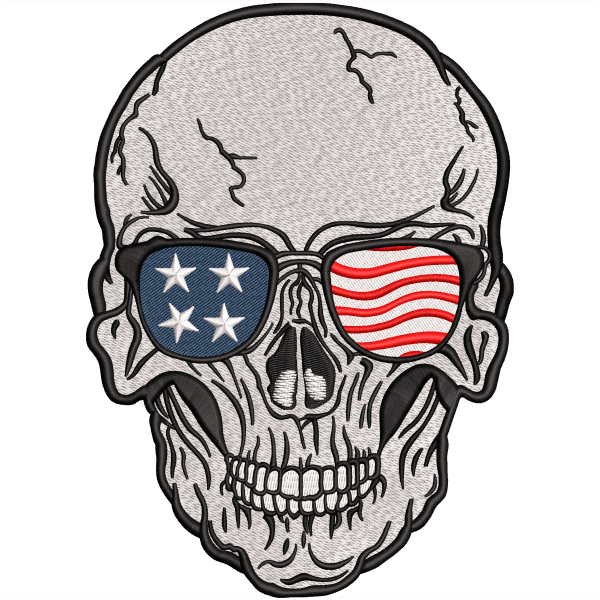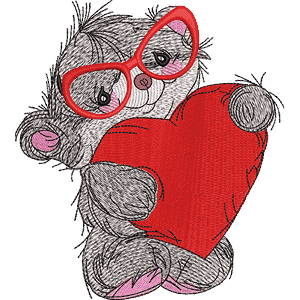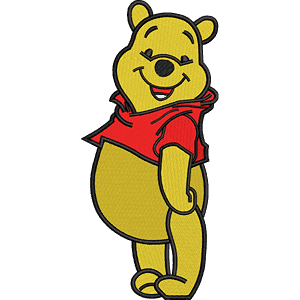Understanding machine embroidery hoop sizes is key to getting great results in your embroidery projects. Choosing the right hoop size ensures that your fabric stays secure and your design stitches out perfectly. But with so many sizes available, it can be confusing to know which hoop is best for your project. From small, detailed designs to larger patterns, each hoop size has its own purpose.
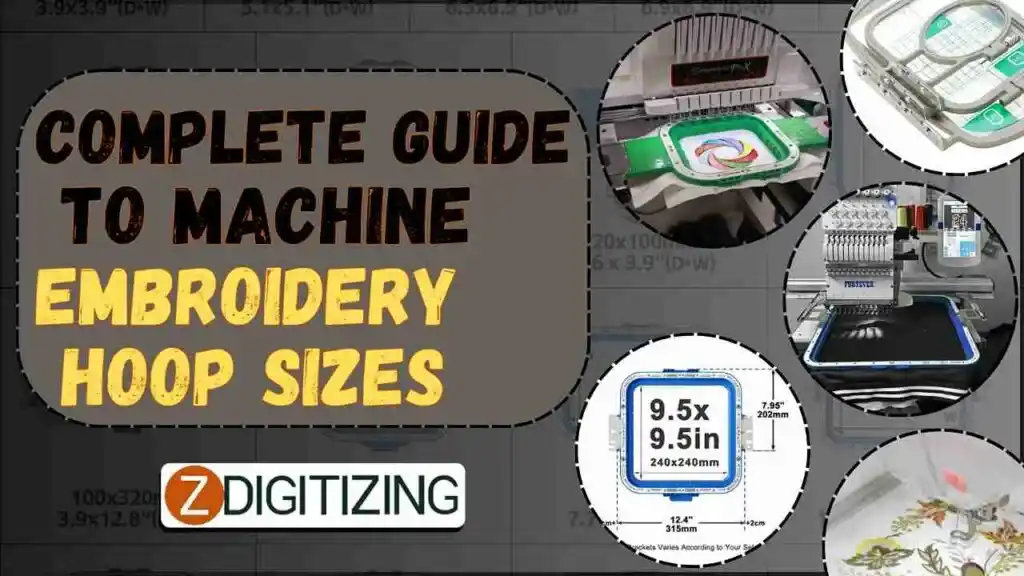
In this article, we’ll explore the different embroidery machine hoop sizes, their uses, and how to select the perfect one for your needs. Let’s dive into the world of embroidery hoops to make your stitching easier!
Complete Guide to Machine Embroidery Hoop Sizes
What is a Machine Embroidery Hoop?
It is a tool that holds the fabric tightly in place while the embroidery machine stitches a design. It ensures the fabric stays smooth and doesn’t move, helping the machine create neat and accurate patterns.
The hoop has two parts—a top and bottom ring—that sandwich the fabric to keep it secure during the embroidery process.
Embroidery Digitizing & Vector Art Services
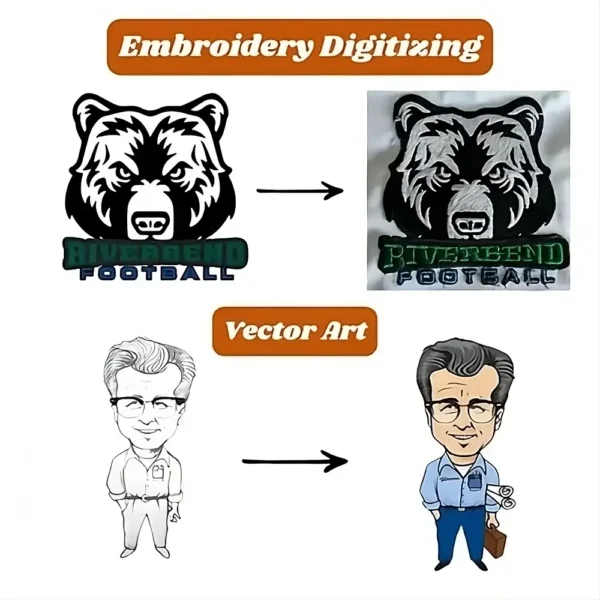
Looking for embroidery digitizing and vector art services that are affordable and reliable? We offer fast turnaround time, guaranteed quality, and the option to preview your design before payment, we make sure you get exactly what you need. Your satisfaction is our top priority, and we’re dedicated to delivering the best results. Don’t wait—try ZDigitizing today and see the difference in quality and service!
Embroidery Digitizing & Vector Art Services
Looking for embroidery digitizing and vector art services that are affordable and reliable? We offer fast turnaround time, guaranteed quality, and the option to preview your design before payment, we make sure you get exactly what you need. Your satisfaction is our top priority, and we’re dedicated to delivering the best results. Don’t wait—try ZDigitizing today and see the difference in quality and service!
Why Understanding Hoop Sizes is Important?
Understanding embroidery machine hoop sizes is important because it directly affects the quality and success of your embroidery projects. The hoop size determines how large or small your designs can be, and choosing the right size ensures that your fabric stays secure and smooth while the machine works.
If you use a hoop that’s too small, your design may not fit, or the fabric might bunch up, leading to poor results. On the other hand, using a hoop that’s too big can cause the fabric to shift, which can distort the design.
By selecting the correct hoop size, you’ll achieve better precision and a cleaner finish for your embroidery.
Types of Machine Embroidery Hoop Sizes Available in the Market
Embroidery hoops are typically categorized by their diameter, measured in inches. Here are the most common sizes available:
- Small Hoops (4″x4″ and below)
- Medium Hoops (5″x7″, 6″x10″)
- Large Hoops (8″x8″, 8″x12″ and above)
1. Small Hoops
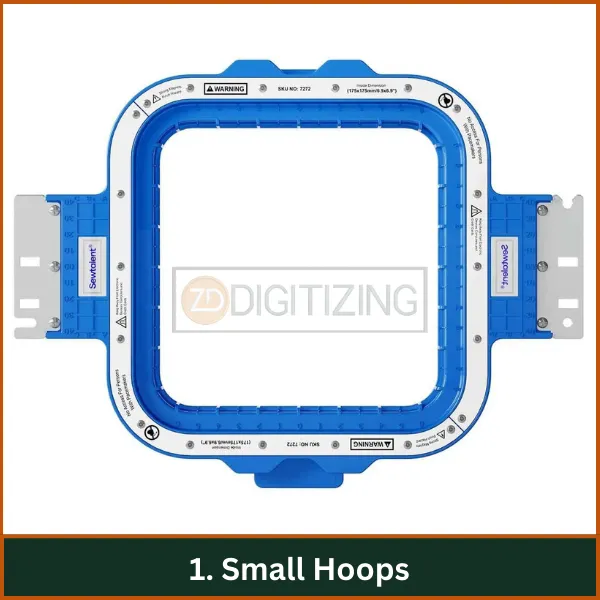
Small embroidery hoops, typically ranging from 1 inch to 4 inches in diameter, are perfect for intricate and delicate embroidery projects. These hoops are lightweight and easy to manage, making them ideal for beginners and those working on smaller designs.
They are available in various materials like wood, plastic, and metal, and often feature a screw mechanism or spring tension to hold the fabric securely. Their compact size makes them portable, allowing users to easily stitch while on the go.
Pricing
The cost of small embroidery hoops varies depending on the material, brand, and design features. Typical price ranges include:
- Plastic Hoops: $2 to $10
- Wooden Hoops: $5 to $15
- Specialty Shapes (e.g., hearts or stars): $3 to $12
For example, mini wooden embroidery hoops are typically priced between £3 and £5 each, depending on the size and design options.
Advantages and Limitations
Advantages |
|
Limitations |
|
2. Medium Hoops
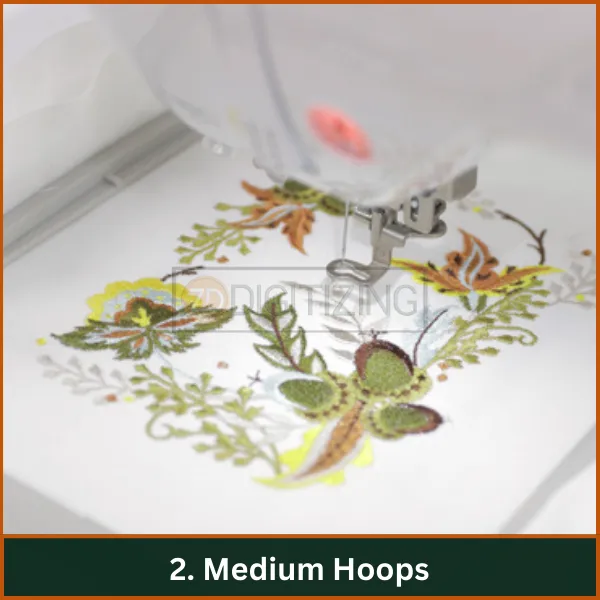
Medium embroidery hoops, typically ranging from 6 to 8 inches in diameter, are versatile tools suitable for a wide variety of embroidery projects. They offer enough space for stitching larger designs while remaining easy to handle for both hand and machine embroidery.
These hoops are perfect for adding decorative details to items like towels, stitching custom logos on T-shirts, or creating framed embroidery art. Available in materials such as plastic and wood, medium hoops often come with screw or spring tension mechanisms to securely hold the fabric in place.
Pricing
The cost of medium embroidery hoops depends on the material and brand. Common price ranges include:
- Plastic Hoops: $5 to $15
- Wooden Hoops: $10 to $25
- Specialty Hoops: Prices vary widely depending on design features and brand, typically ranging from $10 to $30.
Medium hoops strike a balance between affordability and functionality, making them a popular choice for many crafters.
Advantages and Limitations
Advantages |
|
Limitations |
|
3. Large Hoops
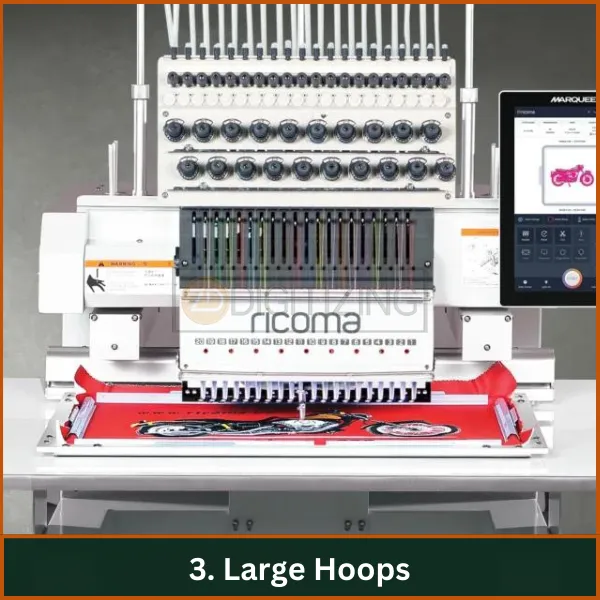
Large embroidery hoops, typically measuring 9 inches or more in diameter, are ideal for larger projects that require a bigger stitching area. These hoops are perfect for creating quilts, large wall hangings, and free-motion embroidery, where the hoop is moved to craft unique designs.
They offer plenty of space for intricate patterns and large-scale designs, providing more creative flexibility. However, due to their size and weight, a hoop stand may be needed for more comfortable use.
Pricing
The cost of large embroidery hoops depends on the material and brand. Typical price ranges include:
- Plastic Hoops: $15 to $30
- Wooden Hoops: $20 to $50
- Specialty Hoops: Prices vary widely based on features and quality, ranging from $25 to $60.
These biggest embroidery machine hoop sizes offer the space and freedom needed for expansive, detailed embroidery projects.
Advantages and Limitations
Advantages |
|
Limitations |
|
Choosing the Right Hoop for Your Project | Factors to Consider
Selecting the right hoop sizes for embroidery machines is essential to ensure the best results for your project. Choosing the wrong hoop can cause fabric slippage, design misalignment, or other issues.
Below are some key factors to consider when selecting the perfect hoop for your project.
- Size of the Design
- Type of Fabric
- Project Type
- Comfort and Ease of Use
- Machine Compatibility
1. Size of the Design
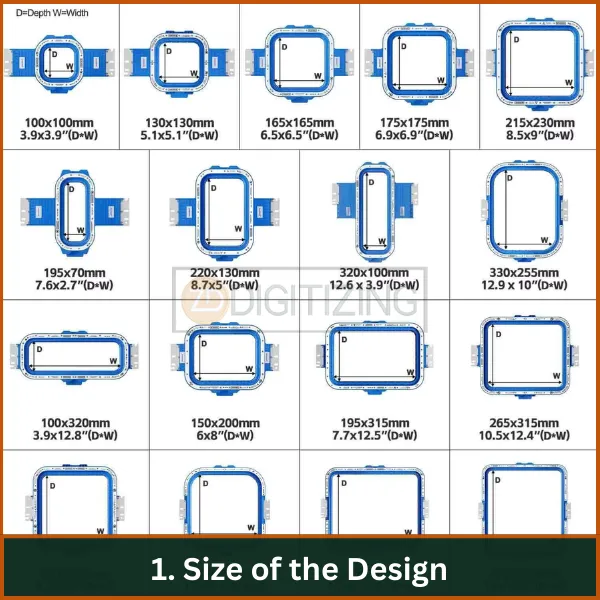
The most important factor is the size of your design. Make sure the machine embroidery hoop sizes match your design size. A hoop that is too small won’t fit the entire design, while a hoop that is too large may make the fabric harder to keep stable.
2. Type of Fabric
Different fabrics behave differently under tension. Thicker fabrics like denim or canvas may need larger, sturdier hoops, while delicate fabrics like silk or organza require smaller hoops to avoid damage.
3. Project Type
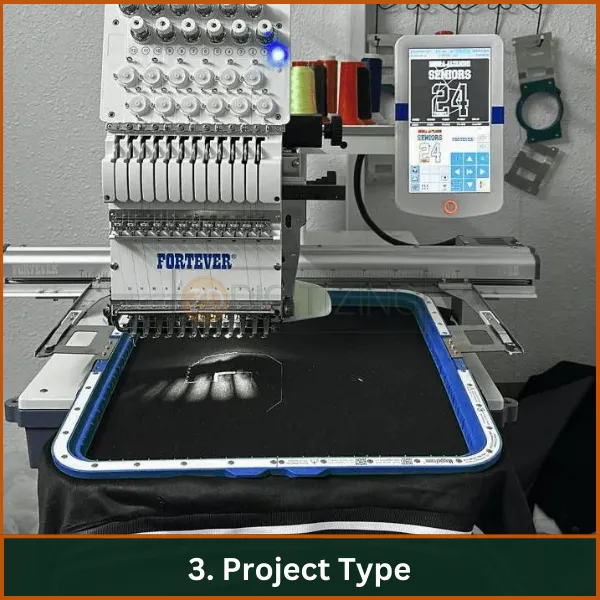
The type of project you are working on also affects your hoop choice. For example, if you are working on smaller items like handkerchiefs or napkins, a small hoop is sufficient. Larger projects like quilts or wall hangings require bigger hoops to accommodate the larger designs.
4. Comfort and Ease of Use
Consider how comfortable the hoop will be for extended use. Larger hoops can be heavier and may require a stand for support, while smaller hoops are easier to handle manually.
5. Machine Compatibility
Always check whether your hoop is compatible with your embroidery machine. Not all hoop sizes work with every machine, so ensure your hoop fits properly with your specific model.
Common Misconceptions About Machine Hoop Sizes
When working with machine embroidery hoop sizes, there are several common misunderstandings that can affect the quality of your projects.
Let’s clear up some of these misconceptions with detailed explanations:
1. Hoop Size Equals Stitching Area
Many people believe that the size of the hoop directly matches the stitching area it can hold. However, this is not the case. The actual stitching area is often smaller than the hoop’s physical size because there needs to be fabric clearance around the edges. For example, a 4″x4″ hoop may only have a stitching area of 3.93″x3.93″. This is important to understand, as using the full hoop size without accounting for this clearance can result in poorly aligned designs.
2. Inconsistent Naming Across Brands
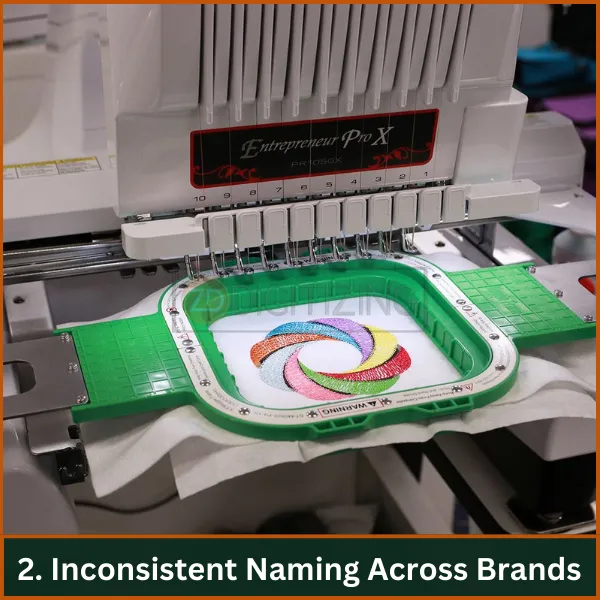
Different embroidery machine brands label hoop sizes differently, leading to confusion. For instance, a hoop labeled 150x240mm may be called a 6″x10″ hoop, even though the stitching field is actually 6″x9.6″. This inconsistency can cause frustration when you pick a design that doesn’t fit the way you expect. It’s always important to check both the actual stitching field and the hoop size to avoid mistakes.
3. Larger Hoops Can Always Be Used
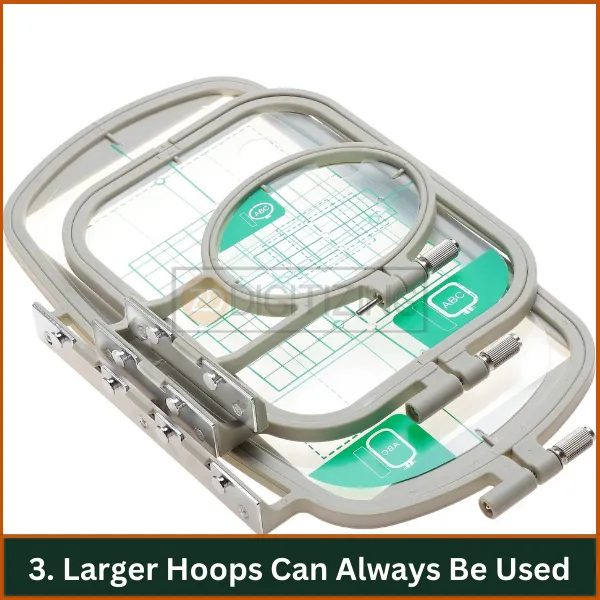
Some users think they can always use a larger hoop for any design, including those meant for smaller hoops. While you can use a larger hoop for smaller designs, the reverse is not true; you cannot use a small hoop for a design that requires a larger one. Additionally, using a larger hoop for a small design may not always give the best results, as the fabric might not stay as tight and could lead to shifting.
Embroidery Digitizing & Vector Art Services

Looking for embroidery digitizing and vector art services that are affordable and reliable? We offer fast turnaround time, guaranteed quality, and the option to preview your design before payment, we make sure you get exactly what you need. Your satisfaction is our top priority, and we’re dedicated to delivering the best results. Don’t wait—try ZDigitizing today and see the difference in quality and service!
Embroidery Digitizing & Vector Art Services
Looking for embroidery digitizing and vector art services that are affordable and reliable? We offer fast turnaround time, guaranteed quality, and the option to preview your design before payment, we make sure you get exactly what you need. Your satisfaction is our top priority, and we’re dedicated to delivering the best results. Don’t wait—try ZDigitizing today and see the difference in quality and service!
4. All Hoops Are the Same
Not all hoops are created equal in terms of materials and functionality. Wooden hoops often provide better tension than plastic ones, and some hoops come with better tension mechanisms, like screw adjustments or spring tension. The difference in materials and design can affect how well the hoop holds the fabric and how easy it is to use. A poorly held fabric can result in uneven stitching and design misalignment, so it’s important to choose the right hoop for your fabric and project.
5. Metric vs. Imperial Confusion
Many embroiderers struggle with the difference between metric (millimeters) and imperial (inches) measurements, especially when switching between brands. This can lead to mistakes in selecting hoop sizes or designs. To avoid confusion, it’s helpful to know your hoop’s size in millimeters and use that measurement when comparing sizes across different systems.
Conclusion
Understanding the right machine embroidery hoop sizes is crucial for making sure your embroidery projects turn out just the way you want. Choosing the correct hoop keeps your fabric secure, prevents mistakes, and ensures your designs are stitched with precision. Now that you know the basics, you can confidently pick the perfect hoop for your next project!
At ZDigitizing, we offer professional embroidery digitizing services to help bring your designs to life. With our fast turnaround time, affordable pricing, and high-quality results, you can trust us for all your digitizing needs. Plus, as a special offer, new customers receive 50% off on their first order! Let us help make your embroidery projects even more successful.
FAQs
For beginners, plastic or bamboo hoops with a screw-tightening feature are best, as they are easy to handle and provide good fabric tension.
To determine the right size embroidery hoop, choose one that is 1 to 2 inches larger than the design area to allow comfortable stitching space around your design.
The size of hoops you need depends on the projects you plan to undertake; having a variety of sizes, such as 4-inch, 6-inch, and 8-inch, will prepare you for most projects.
Choosing the right hoop involves considering the material and size; select a hoop that fits your project size comfortably and is made from a material that offers stability and ease of use for your fabric type.

